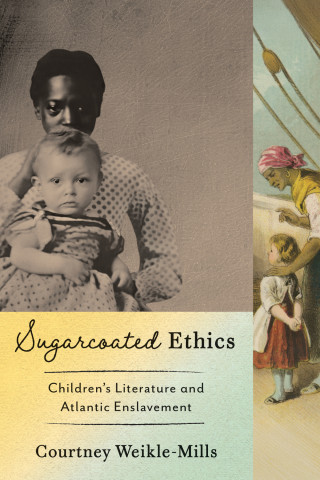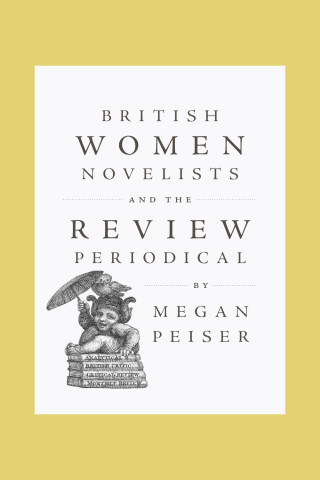
Reviews
What makes Lupton's thoughtful and learned new book, Reading and the Making of Time in the Eighteenth Century, so interesting... is that she presents a set of exemplary readers and writers whose reflective encounters with books highlight the utility of the codex as a technique for thinking about time in its many meanings. The result is a vigorous and partially novel defense of the value of books and the humanities to a happy and meaningful life... Rather than seeing time as a scarce, homogeneous resource to be economized or optimized, Lupton invites us to follow her in seeing books as things that introduce difference, discontinuity, and even plasticity into time itself.
The big achievement here is to set the book in motion, wrenching it free of its disciplinary moorings and putting it back into the flux and flow of time. Reading and the Making of Time in the Eighteenth Century is a slim book, but dense, pointing forward itself to future possibilities and new angles on the history of reading.
Memoir-like elements give Lupton's book a vivid immediacy rarely achieved in scholarly writing... she shows us how reading feels, in both its social and its most deeply personal aspects... Her book goes beyond the perennial problem of how, amid life's many distractions, we might carve out time to read. Reading itself, she argues, "makes" time: books allow us to apprehend time as something elusive and elastic, less a resource to be exploited than an experience to be explored.
The excitement of acquiring concrete, pocketable books in the hope of perhaps someday reading their contents forms in the mind a modest but palpable self who may be permitted by circumstance to do so—a self still waiting in the wings. For them Reading and the Making of Time is written.
Christina Lupton's Reading and the Making of Time in the Eighteenth Century is a fascinating exploration of how books—even those we don't get around to reading—shape our experience of time... Lupton's elegant prose render her complex ideas remarkably accessible... the book is ideally suited to course syllabi at the graduate and advanced undergraduate levels. Making of Time is certain to leave an impact on eighteenth-century studies, book history, and theories of reading. Moreover, its fresh perspective on the utility of activities generally deemed non-useful make it broadly applicable to other kinds of media studies including film and gaming.
That Christina Lupton's Reading and the Making of Time in the Eighteenth Century is best read slowly and carefully testifies to its achievement as both a rigorously researched history and a philosophy of reading for the present... For anyone invested in reading books, teaching books, or simply making time for books, Reading and the Making of Time in the Eighteenth Century is just such a worthwhile commitment.
In Reading and the Making of Time in the Eighteenth Century, Christina Lupton asks a simple and powerful question: When do we read? In this theoretically imaginative and historically grounded book, Lupton lays the groundwork for a phenomenology of reading by showing us how this question about the temporality of reading helps us understand our lives as readers anew.
We usually think of periodicals as timely, books as timeless. Lupton's richly researched and boldly theorized account turns that assumption on its head, revealing that in the eighteenth century as today, a book was what you plan or at least hope to read, what you curse the news for depriving you of time to read, a space of deferred utopian potential.
Lupton’s account of the personal, social, and political value of everyday time spent with, or wanted for, books draws eighteenth-century readers into company with more modern commentators on the temporality of reading as it makes visible the structures of our work and leisure. This is a clever, intimately intelligent book about everyday reading with much to say also about the value of the humanities and the terms on which we may best look to defend them for the future.
The best of reads awaits—about making time for reading and books making time. Reading delayed, reading deferred, reading in the future, books that are never read and read at the hairdresser’s; books cut up, books abandoned. Wearing its theory and reader-autobiography with elegance and style, this book is also a glorious, elegiac love-song for codex.
Readers have for centuries been complaining about a lack of time. But in this theoretically nuanced and archivally rich chronicle of eighteenth-century readers, Lupton shows us how books allow us to remake time in a more mindful and coherent way, where time is broken up but not broken.
By challenging our understanding of time, this marvellously innovative study revisits the processes and resistances of past reading. Christina Lupton’s exploration of non-linear engagements with time uses recent critical and communications theory to offer an expansive and ground-breaking study of eighteenth-century reading experiences. Reading history is excitingly advanced and will not be the same again.
Book Details
Acknowledgments
Introduction: When Do We Read?
The Shortness of Time / The Tense of Reading / Literature as Resistance / The Difference Time Makes / Media History as Literary Method
Chapter One: Time
Acknowledgments
Introduction: When Do We Read?
The Shortness of Time / The Tense of Reading / Literature as Resistance / The Difference Time Makes / Media History as Literary Method
Chapter One: Time Divided
No Difference / Talbot’s Lack of Time / Breaking the Weekly Round / Some Sunday Readers / Sir Charles Comes and Goes
Chapter Two: Joining Up Time
Rereading for Happiness / Slow Translation / Grenville’s Reading Journals /Lifetimes of Reading
Chapter Three: Other Times
Reading in the Field / Linear and Random Access / Literature and Contingency / Amelia’s Beginning with the End / Sidney Bidulph and the Twice-Told Marriage / The Griffiths’ Marriage by the Book
Chapter Four: Time to Come
Stockpiling / Romantic Media / A Simple Story: Reading Comes Later / Godwin: The Future Is Now / Hardcover Truths / You Can’t Skip Pages
Coda: Academic Time
Notes
Works Cited
Index






